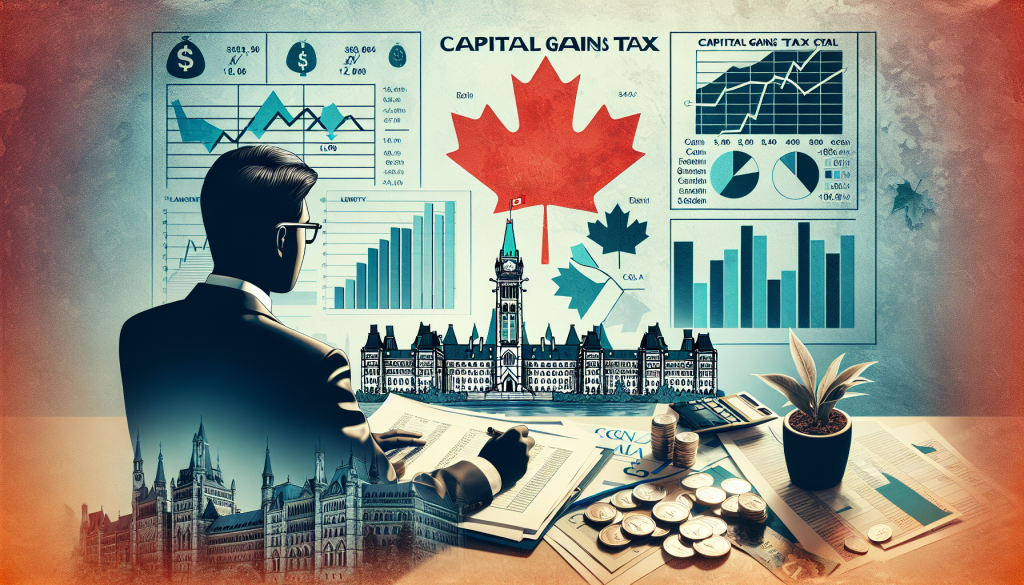Introduction
As a self-employed professional in Toronto, maximizing your tax deductions is crucial for minimizing your tax liability and enhancing your financial health. The Canadian tax system offers various deductions and credits specifically designed to help self-employed individuals reduce their taxable income. By understanding and strategically utilizing these deductions, you can keep more of your hard-earned money and invest in the growth and success of your business.
At Toronto Accountants, we understand the unique challenges faced by self-employed professionals and are committed to helping you navigate the complexities of tax planning and preparation. This comprehensive guide offers valuable strategies for maximizing deductions and optimizing your tax position. From business expenses and home office deductions to vehicle expenses and retirement contributions, we cover everything you need to know to make the most of your deductions and achieve financial success.
In this blog post, we will explore various aspects of maximizing deductions for self-employed professionals in Toronto. We will discuss the types of deductions available, how to qualify for them, and practical tips for documenting and claiming these deductions. By implementing these strategies, you can reduce your tax liability, improve your cash flow, and ensure compliance with Canada Revenue Agency (CRA) requirements. Let’s dive into our detailed guide to maximizing deductions for self-employed professionals in Toronto.
Understanding Tax Deductions for Self-Employed Professionals
Types of Tax Deductions
As a self-employed professional, you are eligible for a wide range of tax deductions that can significantly reduce your taxable income. These deductions include business expenses, home office expenses, vehicle expenses, and more. Understanding the types of deductions available and how to qualify for them is essential for maximizing your tax savings. Business expenses are one of the most common types of deductions and include any costs incurred in the course of running your business. This can include office supplies, advertising costs, travel expenses, and professional fees. To qualify for a business expense deduction, the expense must be directly related to your business and necessary for earning income. Keeping detailed records and receipts of all business expenses is crucial for substantiating your deductions and ensuring compliance with CRA requirements.
Home office expenses are another valuable deduction for self-employed professionals who use a portion of their home for business purposes. To qualify for this deduction, you must have a designated area in your home that is used exclusively and regularly for business activities. Home office expenses can include a portion of your rent or mortgage interest, property taxes, utilities, and home maintenance costs. Calculating the percentage of your home used for business and applying this percentage to your total home expenses can help you determine the amount of the deduction.
Vehicle expenses are also deductible if you use your vehicle for business purposes. This can include expenses such as fuel, maintenance, insurance, and depreciation. To qualify for a vehicle expense deduction, you must keep detailed records of your business mileage and the total mileage driven during the year. The CRA allows you to deduct a portion of your vehicle expenses based on the percentage of business use. Keeping a mileage log and retaining receipts for all vehicle-related expenses can help you accurately calculate and claim this deduction.
Qualifying for Deductions
Qualifying for tax deductions as a self-employed professional involves meeting specific criteria set by the CRA. For business expenses to be deductible, they must be reasonable, necessary, and directly related to your business activities. This means that personal expenses and expenses that are not essential for earning income are not deductible. Additionally, expenses must be supported by proper documentation, such as receipts, invoices, and bank statements. Ensuring that your expenses meet these criteria and are well-documented is essential for qualifying for deductions and avoiding issues with the CRA.
For home office expenses, you must have a designated area in your home that is used exclusively and regularly for business purposes. This area can be a separate room or a specific space within a room, such as a desk or workstation. The space must be used primarily for conducting business activities, such as meeting clients, performing work tasks, or storing business-related materials. Keeping records of the size of your home office and the total size of your home, as well as any expenses related to maintaining the home office, is crucial for substantiating this deduction.
Vehicle expenses can be deducted if you use your vehicle for business purposes. To qualify for this deduction, you must keep detailed records of your business mileage and the total mileage driven during the year. The CRA allows you to deduct a portion of your vehicle expenses based on the percentage of business use. This can include expenses such as fuel, maintenance, insurance, and depreciation. Keeping a mileage log and retaining receipts for all vehicle-related expenses can help you accurately calculate and claim this deduction. Ensuring that your vehicle expenses are properly documented and meet the CRA’s criteria is essential for qualifying for this deduction.
Importance of Documentation
Proper documentation is essential for maximizing your tax deductions and ensuring compliance with CRA requirements. The CRA requires that all expenses claimed as deductions be supported by appropriate documentation, such as receipts, invoices, and bank statements. Maintaining organized and detailed records of all business expenses, home office expenses, and vehicle expenses is crucial for substantiating your deductions and avoiding issues with the CRA.
One of the key benefits of proper documentation is that it provides evidence to support your deductions in the event of an audit or review by the CRA. Without proper documentation, the CRA may disallow your deductions, resulting in additional taxes, penalties, and interest charges. Keeping detailed records and receipts of all expenses ensures that you can substantiate your deductions and provide the necessary evidence to the CRA if required.
Proper documentation also helps you accurately calculate and claim your deductions. By keeping organized records of all expenses, you can easily track and categorize your expenses, calculate the total amount of deductions, and ensure that you claim all eligible expenses. Using accounting software or digital tools can help streamline the process of documenting and organizing expenses, making it easier to manage your records and ensure compliance with CRA requirements. By maintaining proper documentation, you can maximize your deductions, reduce your tax liability, and ensure the financial health of your business.
Maximizing Business Expense Deductions
Office Supplies and Equipment
Office supplies and equipment are common business expenses that can be deducted to reduce your taxable income. This can include items such as paper, pens, printer ink, and other office supplies necessary for running your business. Additionally, office equipment such as computers, printers, and furniture can also be deducted. To qualify for these deductions, the expenses must be directly related to your business activities and necessary for earning income.
One strategy for maximizing office supply and equipment deductions is to keep detailed records of all purchases. This includes retaining receipts, invoices, and bank statements that show the date, amount, and purpose of each purchase. Using accounting software or digital tools to track and categorize office supply and equipment expenses can help you stay organized and ensure that you claim all eligible deductions.
Another strategy is to consider the timing of your purchases. If you anticipate higher income in a particular year, you may want to make necessary office supply and equipment purchases before the end of the tax year to maximize your deductions. Additionally, the CRA allows you to depreciate the cost of office equipment over several years through the Capital Cost Allowance (CCA). Understanding the CCA rules and applying them correctly can help you maximize your deductions and reduce your taxable income over time.
Advertising and Marketing
Advertising and marketing expenses are essential for promoting your business and attracting clients. The CRA allows you to deduct reasonable advertising and marketing expenses that are directly related to your business activities. This can include costs associated with online advertising, print advertisements, social media campaigns, business cards, and promotional materials. By strategically planning and documenting your advertising and marketing expenses, you can maximize your deductions and enhance your business’s visibility and growth.
One strategy for maximizing advertising and marketing deductions is to create a detailed marketing plan and budget. This plan should outline your marketing objectives, target audience, and the various advertising and marketing activities you plan to undertake. By having a clear plan and budget, you can track your expenses more effectively and ensure that you claim all eligible deductions. Keeping records of all advertising and marketing expenses, including receipts, invoices, and contracts, is crucial for substantiating your deductions.
Another strategy is to take advantage of digital marketing tools and platforms. Online advertising through social media, search engines, and email marketing can be a cost-effective way to reach a large audience and promote your business. Many digital marketing platforms provide detailed reports and analytics that can help you track your advertising expenses and measure the effectiveness of your campaigns. By leveraging digital marketing tools and keeping detailed records of your expenses, you can maximize your advertising and marketing deductions and achieve your business goals.
Professional Fees and Services
Professional fees and services are another category of deductible business expenses. This can include fees paid to accountants, lawyers, consultants, and other professionals who provide services related to your business. The CRA allows you to deduct reasonable professional fees and services that are necessary for earning income and managing your business. By documenting and claiming these expenses, you can reduce your taxable income and ensure that you receive the professional support you need to run your business effectively.
One strategy for maximizing professional fees and services deductions is to keep detailed records of all payments made to professionals. This includes retaining receipts, invoices, and contracts that show the date, amount, and purpose of each payment. Using accounting software or digital tools to track and categorize professional fees and services expenses can help you stay organized and ensure that you claim all eligible deductions.
Another strategy is to consider the timing of your payments. If you anticipate higher income in a particular year, you may want to pay for necessary professional services before the end of the tax year to maximize your deductions. Additionally, consider the value and impact of the professional services you receive. Investing in high-quality professional support can help you manage your business more effectively, reduce your tax liability, and achieve your business goals. By documenting and claiming all eligible professional fees and services, you can maximize your deductions and enhance the financial health of your business.
Home Office Deductions
Calculating Home Office Expenses
Home office deductions can provide significant tax savings for self-employed professionals who use a portion of their home for business purposes. To qualify for this deduction, you must have a designated area in your home that is used exclusively and regularly for business activities. Calculating home office expenses involves determining the percentage of your home used for business and applying this percentage to your total home expenses. This can include expenses such as rent or mortgage interest, property taxes, utilities, and home maintenance costs.
To calculate the percentage of your home used for business, measure the square footage of your home office and divide it by the total square footage of your home. For example, if your home office is 200 square feet and your home is 2,000 square feet, the percentage of your home used for business is 10%. You can then apply this percentage to your total home expenses to determine the amount of the deduction. Keeping records of the size of your home office and the total size of your home, as well as any expenses related to maintaining the home office, is crucial for substantiating this deduction.
Another important consideration is the type of expenses that can be deducted. Direct expenses are costs that are directly related to the home office, such as office supplies and equipment. These expenses can be deducted in full. Indirect expenses are costs related to the entire home, such as rent or mortgage interest, property taxes, utilities, and home maintenance. These expenses can be deducted based on the percentage of your home used for business. Keeping detailed records and receipts of all home office expenses is essential for accurately calculating and claiming this deduction.
Eligible Home Office Expenses
Eligible home office expenses can include a wide range of costs associated with maintaining and operating your home office. This can include rent or mortgage interest, property taxes, utilities, home maintenance costs, and office supplies and equipment. The CRA allows you to deduct a portion of these expenses based on the percentage of your home used for business. Understanding the types of eligible expenses and how to calculate the deduction is crucial for maximizing your home office deductions.
Rent or mortgage interest is one of the largest home office expenses that can be deducted. If you rent your home, you can deduct a portion of your rent based on the percentage of your home used for business. If you own your home, you can deduct a portion of the mortgage interest, but not the principal repayment. Property taxes and home insurance can also be deducted based on the percentage of your home used for business. Keeping records of your rent or mortgage interest payments, property taxes, and home insurance premiums is essential for substantiating these deductions.
Utilities and home maintenance costs are other common home office expenses that can be deducted. This can include expenses such as electricity, heating, water, and internet costs. Home maintenance costs, such as repairs and cleaning, can also be deducted based on the percentage of your home used for business. Keeping records and receipts of all utility and home maintenance expenses is crucial for accurately calculating and claiming this deduction. By documenting and claiming all eligible home office expenses, you can maximize your deductions and reduce your tax liability.
Record-Keeping for Home Office Deductions
Proper record-keeping is essential for maximizing home office deductions and ensuring compliance with CRA requirements. The CRA requires that all home office expenses claimed as deductions be supported by appropriate documentation, such as receipts, invoices, and bank statements. Maintaining organized and detailed records of all home office expenses is crucial for substantiating your deductions and avoiding issues with the CRA.
One strategy for effective record-keeping is to use digital tools and accounting software to track and categorize home office expenses. Many accounting software programs allow you to create categories for different types of expenses, such as rent, utilities, and office supplies, making it easier to organize and manage your records. Using digital tools can also provide secure and convenient access to your records, allowing you to easily retrieve and review your expenses when needed.
Another important aspect of record-keeping is to retain all receipts and invoices related to home office expenses. This includes receipts for rent or mortgage interest payments, property taxes, utilities, and home maintenance costs. Keeping digital copies of receipts and invoices can help you organize your records and ensure that you have the necessary documentation to support your deductions. By maintaining proper records and documentation, you can maximize your home office deductions, reduce your tax liability, and ensure compliance with CRA requirements.
Vehicle Expense Deductions
Tracking Business Mileage
Tracking business mileage is essential for maximizing vehicle expense deductions and ensuring compliance with CRA requirements. The CRA allows you to deduct a portion of your vehicle expenses based on the percentage of business use. This can include expenses such as fuel, maintenance, insurance, and depreciation. To qualify for this deduction, you must keep detailed records of your business mileage and the total mileage driven during the year.
One strategy for tracking business mileage is to use a mileage log or mileage tracking app. A mileage log should include the date, starting and ending locations, purpose of the trip, and the number of miles driven for each business trip. Mileage tracking apps can automate the process of recording business mileage, making it easier to track and categorize your trips. Many mileage tracking apps provide reports and summaries that can help you calculate and claim your vehicle expense deductions accurately.
Another important aspect of tracking business mileage is to differentiate between business and personal use of your vehicle. Only the mileage driven for business purposes is deductible. Personal use of the vehicle, such as commuting to and from work, is not deductible. Keeping detailed records of both business and personal mileage is crucial for accurately calculating the percentage of business use and claiming the appropriate deductions. By tracking your business mileage effectively, you can maximize your vehicle expense deductions and reduce your tax liability.
Calculating Vehicle Expenses
Calculating vehicle expenses involves determining the total cost of operating your vehicle and applying the percentage of business use to these expenses. Vehicle expenses can include fuel, maintenance, insurance, depreciation, and other costs associated with operating your vehicle. The CRA allows you to deduct a portion of these expenses based on the percentage of business use. Understanding how to calculate and claim vehicle expenses is crucial for maximizing your deductions and reducing your tax liability.
To calculate vehicle expenses, start by determining the total cost of operating your vehicle for the year. This can include expenses such as fuel, oil changes, repairs, insurance premiums, license and registration fees, and depreciation. Keeping detailed records and receipts of all vehicle-related expenses is essential for accurately calculating the total cost. Next, determine the percentage of business use by dividing the total business mileage by the total mileage driven during the year. For example, if you drove 10,000 miles for business and 15,000 miles in total, the percentage of business use is 67%.
Apply the percentage of business use to the total vehicle expenses to calculate the deductible amount. For example, if your total vehicle expenses are $6,000 and the percentage of business use is 67%, the deductible amount is $4,020. Keeping detailed records of your business mileage and vehicle expenses, as well as using accounting software or digital tools to track and categorize these expenses, can help you accurately calculate and claim your vehicle expense deductions. By understanding the calculation process and maintaining proper records, you can maximize your vehicle expense deductions and reduce your tax liability.
Lease vs. Purchase Considerations
When it comes to deducting vehicle expenses, self-employed professionals have the option to lease or purchase a vehicle. Both options have different tax implications and can affect the amount of deductions you can claim. Understanding the differences between leasing and purchasing a vehicle and the associated tax benefits can help you make an informed decision and maximize your deductions.
Leasing a vehicle allows you to deduct the lease payments as a business expense. The CRA allows you to deduct a portion of the lease payments based on the percentage of business use. In addition to lease payments, you can also deduct other vehicle-related expenses such as fuel, maintenance, and insurance. One of the benefits of leasing a vehicle is that lease payments are typically lower than loan payments, which can result in higher deductions. However, there are limitations on the amount of lease payments that can be deducted, and any excess payments may be subject to additional restrictions.
Purchasing a vehicle allows you to deduct the depreciation of the vehicle through the Capital Cost Allowance (CCA). The CRA allows you to claim a portion of the vehicle’s depreciation each year based on the percentage of business use. In addition to depreciation, you can also deduct other vehicle-related expenses such as fuel, maintenance, and insurance. One of the benefits of purchasing a vehicle is that you can claim a higher amount of deductions through depreciation. However, the upfront cost of purchasing a vehicle may be higher than leasing, and the tax benefits may vary depending on the vehicle’s cost and depreciation rate.
When deciding whether to lease or purchase a vehicle, consider factors such as your business needs, cash flow, and tax implications. Consulting with a professional accountant or tax advisor can help you evaluate the pros and cons of each option and determine the best strategy for maximizing your vehicle expense deductions. By understanding the tax implications and making an informed decision, you can optimize your vehicle expenses and reduce your tax liability.
Retirement Contributions and Savings
RRSP Contributions
Contributing to a Registered Retirement Savings Plan (RRSP) is one of the most effective ways for self-employed professionals to save for retirement and reduce their taxable income. RRSP contributions are tax-deductible, meaning that they can be used to reduce your taxable income for the year in which the contributions are made. The investment income earned within the RRSP is tax-deferred until withdrawal, allowing your savings to grow tax-free. By strategically contributing to an RRSP, you can maximize your tax savings and build a strong financial foundation for retirement.
One strategy for maximizing RRSP contributions is to contribute the maximum allowable amount each year. The CRA sets annual contribution limits based on your earned income, with a maximum limit that is adjusted annually for inflation. For the 2023 tax year, the RRSP contribution limit is 18% of your earned income, up to a maximum of $30,780. Any unused contribution room can be carried forward to future years, allowing you to make additional contributions and maximize your tax savings.
Another strategy is to contribute to an RRSP early in the tax year or make regular contributions throughout the year. By contributing early or regularly, you can take advantage of the tax-deferred growth and maximize the compounding effect of your investments. Additionally, making regular contributions can help you stay disciplined and ensure that you consistently save for retirement. Keeping records of your contributions and monitoring your contribution limits can help you maximize your RRSP contributions and optimize your tax savings.
Tax-Free Savings Account (TFSA)
A Tax-Free Savings Account (TFSA) is another valuable savings vehicle for self-employed professionals. Unlike RRSP contributions, TFSA contributions are not tax-deductible, but any investment income earned within the account is tax-free. Withdrawals from a TFSA are also tax-free, providing a flexible and tax-efficient savings option. By strategically contributing to a TFSA, you can achieve tax-free growth and enhance your financial security.
One of the key benefits of a TFSA is the flexibility it offers. You can contribute to a TFSA at any time, up to the annual contribution limit set by the CRA. For the 2023 tax year, the TFSA contribution limit is $6,500. Any unused contribution room can be carried forward to future years, allowing you to make additional contributions and maximize your tax-free savings. Additionally, any amounts withdrawn from a TFSA are added back to your contribution room in the following year, allowing you to re-contribute the withdrawn amounts.
Another strategy for maximizing TFSA contributions is to use the account for short-term and long-term savings goals. The tax-free growth and flexibility of a TFSA make it an ideal vehicle for both emergency savings and long-term investments. By contributing to a TFSA and investing in a diversified portfolio of assets, you can achieve tax-free growth and build a strong financial foundation for the future. Keeping records of your contributions and monitoring your contribution limits can help you maximize your TFSA contributions and optimize your tax-free savings.
Combining RRSP and TFSA Contributions
Combining RRSP and TFSA contributions is a powerful strategy for maximizing your tax savings and building a strong financial foundation. Both RRSPs and TFSAs offer unique tax benefits, and strategically contributing to both accounts can help you achieve your financial goals and enhance your financial security. By understanding the benefits of each account and how to optimize your contributions, you can maximize your savings and reduce your tax liability.
One strategy for combining RRSP and TFSA contributions is to contribute to an RRSP to reduce your taxable income and achieve tax-deferred growth, while also contributing to a TFSA to achieve tax-free growth and maintain flexibility. By contributing to both accounts, you can take advantage of the immediate tax savings offered by RRSP contributions and the long-term tax-free growth offered by TFSA contributions. This balanced approach can help you achieve your short-term and long-term financial goals and enhance your financial security.
Another strategy is to use RRSP contributions to maximize your tax savings during high-income years and use TFSA contributions to achieve tax-free growth during lower-income years. By strategically timing your contributions, you can optimize your tax savings and achieve your financial goals. Consulting with a professional accountant or financial advisor can help you develop a personalized strategy for combining RRSP and TFSA contributions and maximizing your tax savings. By understanding the benefits of each account and strategically contributing to both, you can achieve your financial goals and enhance your financial security.
Common Tax Mistakes to Avoid
Overlooking Deductions
One of the most common tax mistakes made by self-employed professionals is overlooking eligible deductions. Failing to claim all available deductions can result in a higher taxable income and increased tax liability. To maximize your deductions and reduce your tax liability, it’s important to be aware of the various deductions available to self-employed professionals and ensure that you claim all eligible expenses.
One strategy for avoiding this mistake is to stay informed about the deductions available to self-employed professionals and regularly review your expenses to identify potential deductions. This can include business expenses, home office expenses, vehicle expenses, and other eligible deductions. Keeping detailed records and receipts of all expenses can help you track and categorize your expenses, making it easier to identify and claim eligible deductions.
Another strategy is to work with a professional accountant or tax advisor who can help you identify and claim all eligible deductions. Tax professionals have the expertise to navigate the complexities of tax regulations and ensure that you take advantage of all available deductions. By leveraging the expertise of professionals, you can maximize your deductions, reduce your tax liability, and ensure compliance with CRA requirements.
Failing to Keep Detailed Records
Proper record-keeping is essential for maximizing deductions and ensuring compliance with CRA requirements. Failing to keep detailed records of your expenses can result in disallowed deductions, increased tax liability, and potential issues with the CRA. To avoid this mistake, it’s important to maintain organized and detailed records of all business expenses, home office expenses, vehicle expenses, and other eligible deductions.
One strategy for effective record-keeping is to use accounting software or digital tools to track and categorize your expenses. Many accounting software programs allow you to create categories for different types of expenses, making it easier to organize and manage your records. Using digital tools can also provide secure and convenient access to your records, allowing you to easily retrieve and review your expenses when needed.
Another important aspect of record-keeping is to retain all receipts and invoices related to your expenses. This includes receipts for business purchases, home office expenses, vehicle expenses, and other deductible expenses. Keeping digital copies of receipts and invoices can help you organize your records and ensure that you have the necessary documentation to support your deductions. By maintaining proper records and documentation, you can maximize your deductions, reduce your tax liability, and ensure compliance with CRA requirements.
Misclassifying Expenses
Misclassifying expenses is another common tax mistake made by self-employed professionals. Misclassifying expenses can result in disallowed deductions, increased tax liability, and potential issues with the CRA. To avoid this mistake, it’s important to understand the different types of expenses and how to classify them correctly. This includes distinguishing between business expenses and personal expenses, direct expenses and indirect expenses, and eligible and ineligible deductions.
One strategy for avoiding this mistake is to familiarize yourself with the CRA’s guidelines on expense classification and ensure that you follow these guidelines when categorizing your expenses. This can include understanding the criteria for business expenses, home office expenses, vehicle expenses, and other deductions. Keeping detailed records and receipts of all expenses can also help you accurately classify your expenses and substantiate your deductions.
Another strategy is to work with a professional accountant or tax advisor who can help you accurately classify your expenses and ensure that you claim all eligible deductions. Tax professionals have the expertise to navigate the complexities of tax regulations and provide guidance on expense classification. By leveraging the expertise of professionals, you can avoid misclassifying expenses, maximize your deductions, and ensure compliance with CRA requirements.
Leveraging Professional Tax Services
Expertise and Accuracy
Leveraging professional tax services provides self-employed professionals with access to expertise and accuracy in tax planning and preparation. Tax professionals, such as accountants and tax advisors, have extensive knowledge and experience in navigating the complexities of tax regulations and ensuring compliance with CRA requirements. By leveraging the expertise of professionals, you can ensure that your tax returns are accurate, compliant, and optimized for maximum deductions.
Professional tax services can help you identify and claim all eligible deductions, ensuring that you take advantage of all available tax-saving opportunities. Tax professionals can provide valuable insights into the deductions and credits available to self-employed professionals and help you navigate the documentation and record-keeping requirements. By working with tax professionals, you can maximize your deductions, reduce your tax liability, and ensure compliance with CRA requirements.
In addition to ensuring accuracy, professional tax services can provide support in navigating complex tax issues and challenges. This can include managing audits, resolving tax disputes, and addressing compliance issues. Tax professionals have the expertise to handle these challenges effectively and ensure that your tax returns remain accurate and compliant. By leveraging the expertise and support of professional tax services, you can navigate the complexities of tax planning and preparation with confidence and achieve long-term financial success.
Time and Stress Savings
Outsourcing tax planning and preparation tasks to professional tax services can result in significant time and stress savings for self-employed professionals. Managing tax returns, identifying deductions, and ensuring compliance with CRA requirements can be time-consuming and stressful. By outsourcing these tasks to professionals, you can free up valuable time to focus on your business activities and reduce the stress associated with tax planning and preparation.
Professional tax services offer a cost-effective alternative to managing tax tasks in-house. Hiring and training in-house tax staff can be costly and resource-intensive. Professional tax services provide access to expertise and resources without the need for additional staffing and training. By outsourcing tax planning and preparation tasks, you can reduce overhead costs and ensure that your tax returns are accurate and optimized for maximum deductions.
In addition to time and cost savings, professional tax services provide peace of mind by ensuring that your tax returns are accurate, compliant, and optimized for maximum deductions. Tax professionals stay updated with the latest changes in tax regulations and can provide guidance on best practices in tax planning and preparation. By leveraging the expertise and support of professional tax services, you can navigate the complexities of tax planning and preparation with confidence and achieve long-term financial success.
Strategic Tax Planning
Professional tax services provide self-employed professionals with access to strategic tax planning and advice. Tax professionals can help you develop a comprehensive tax strategy that aligns with your business objectives and maximizes your tax savings. This can include optimizing your deductions, managing your income and expenses, and taking advantage of available tax credits and incentives.
Strategic tax planning involves understanding your unique financial situation and developing a personalized tax strategy that minimizes your tax liability and enhances your financial health. Tax professionals can provide valuable insights into the deductions and credits available to self-employed professionals and help you navigate the documentation and record-keeping requirements. By working with tax professionals, you can develop a tax strategy that maximizes your deductions, reduces your tax liability, and ensures compliance with CRA requirements.
In addition to tax planning, professional tax services can provide ongoing support and advice throughout the year. Tax professionals can help you stay informed about changes in tax regulations, provide guidance on tax-saving opportunities, and offer strategic advice to help you achieve your financial goals. By leveraging the expertise and support of professional tax services, you can navigate the complexities of tax planning and preparation with confidence and achieve long-term financial success.
Conclusion
Maximizing deductions is essential for self-employed professionals in Toronto to reduce their tax liability and enhance their financial health. By understanding and strategically utilizing the available deductions, you can keep more of your hard-earned money and invest in the growth and success of your business. Proper documentation, effective record-keeping, and leveraging professional tax services are crucial for maximizing your deductions and ensuring compliance with CRA requirements.
At Toronto Accountants, we are committed to helping self-employed professionals navigate the complexities of tax planning and preparation. Our team of experienced tax professionals is dedicated to providing personalized and reliable tax solutions. Whether you need assistance with tax preparation, tax planning, or strategic tax advice, we are here to help.
By implementing the strategies outlined in this guide and leveraging the expertise of professional tax services, you can maximize your deductions, reduce your tax liability, and achieve long-term financial success. Contact us today to schedule a consultation and experience the benefits of professional tax services. Let us help you achieve your financial goals and ensure the long-term success of your business.











